Introduction
Aluminum is one of the most versatile and widely used metals in the world, known for its lightweight, strength, and corrosion resistance. Among its various applications, aluminum rods, particularly those with a diameter of 9.5 mm, play a critical role in numerous industries such as construction, electrical, and transportation. This article delves into the properties, production processes, applications, and market dynamics of 9.5 mm aluminum rods, with a specific focus on Elka Mehr Kimiya, a leading producer from Iran known for its high-quality products and competitive prices.
Properties of Aluminum
Aluminum’s unique combination of properties makes it a preferred material for many applications. These properties include:
- Lightweight: Aluminum is about one-third the weight of steel, which makes it easier to handle and reduces transportation costs.
- Strength: Despite its light weight, aluminum can be alloyed with other elements to produce materials with strength comparable to steel.
- Corrosion Resistance: Aluminum naturally forms a protective oxide coating, making it highly resistant to corrosion.
- Electrical Conductivity: Aluminum is an excellent conductor of electricity, making it ideal for electrical applications.
- Thermal Conductivity: Aluminum efficiently conducts heat, useful in applications requiring heat dissipation.
- Recyclability: Aluminum can be recycled repeatedly without losing its properties, contributing to sustainability.
Production Process of 9.5 mm Aluminum Rods
The production of aluminum rods, including the 9.5 mm variant, involves several stages:
- Bauxite Mining and Refining: Aluminum production starts with the extraction of bauxite ore, which is refined into alumina (aluminum oxide) using the Bayer process.
- Electrolytic Reduction: Alumina is then subjected to electrolytic reduction in a process known as the Hall-Héroult process to produce pure aluminum.
- Casting: The molten aluminum is cast into billets, which are then processed into various forms including rods.
- Rolling and Drawing: The billets are hot-rolled into coils and then drawn through dies to achieve the desired rod diameter of 9.5 mm.
- Heat Treatment: Depending on the required mechanical properties, the rods may undergo various heat treatment processes.
- Surface Finishing: The rods may also receive surface treatments to enhance properties like corrosion resistance or electrical conductivity.
Table 1: Typical Composition of Aluminum Alloys Used in 9.5 mm Rods
| Alloy Series | Major Alloying Elements | Typical Applications |
|---|---|---|
| 1000 | Pure aluminum | Electrical conductors, chemical equipment |
| 2000 | Copper | Aerospace, automotive |
| 3000 | Manganese | Beverage cans, cooking utensils |
| 5000 | Magnesium | Marine applications, pressure vessels |
| 6000 | Magnesium and silicon | Structural applications, building materials |
| 7000 | Zinc | High-strength applications, sporting goods |
Applications of 9.5 mm Aluminum Rods
Electrical Industry
One of the primary uses of 9.5 mm aluminum rods is in the electrical industry. Due to its excellent electrical conductivity, aluminum is often used for manufacturing electrical conductors. The 9.5 mm diameter rods are ideal for producing overhead power lines, electrical wiring, and bus bars.
Overhead Transmission Lines
Aluminum wire rods are extensively used in the construction of overhead transmission lines due to their strength and flexibility. They facilitate efficient electricity distribution over long distances, with conductors such as AAC (All Aluminum Conductor), AAAC (All Aluminum Alloy Conductor), and ABC (Aerial Bundled Cable) relying on aluminum wire rods for their construction.
Fasteners
Aluminum’s favorable mechanical properties make it an ideal choice for manufacturing fasteners such as nuts, bolts, and screws. These fasteners ensure robust connections in electrical infrastructure, providing reliability and durability.
Transformers
Aluminum’s lightweight nature makes it a preferred material for manufacturing transformer windings. This property enables the construction of efficient transformers for voltage regulation in power distribution networks, contributing to the stability and efficiency of electrical grids.
Underground Cables
Aluminum wire rods are used in the production of underground cables. Their durability and corrosion resistance cater to urban infrastructural requirements, ensuring long-lasting performance and reduced maintenance needs.
Construction Industry
In the construction industry, aluminum rods are used in various structural applications. Their lightweight and high strength make them suitable for use in frameworks, roofing, cladding systems, railings, and decorative elements. Additionally, aluminum’s corrosion resistance ensures longevity and durability in building components.
Transportation Industry
The transportation industry benefits from aluminum’s lightweight properties, which contribute to fuel efficiency and reduced emissions. 9.5 mm aluminum rods are used in the manufacture of vehicle frames, engine components, and other parts that require a balance of strength and light weight. In the aerospace industry, aluminum wire rods are used in aircraft structures to achieve weight reduction and enhance performance.
Electrical Engineering
Given their excellent conductivity, aluminum wire rods are utilized in electrical transmission lines, bus bars, and other electrical components. These rods ensure efficient power distribution, making them crucial for the development and maintenance of electrical infrastructure.
Consumer Goods
Aluminum wire rods are found in various consumer goods, including furniture, appliances, and sports equipment. Their aesthetic appeal and durability are highly valued, providing manufacturers with a versatile material for diverse applications.
Machinery and Equipment
Aluminum wire rods are used in manufacturing machinery and equipment parts where lightweight and corrosion resistance are essential. This includes parts for industrial machinery and precision equipment, ensuring longevity and reliability in demanding environments.
Table 2: Key Applications of 9.5 mm Aluminum Rods
| Industry | Applications |
|---|---|
| Electrical | Power lines, wiring, bus bars |
| Overhead Transmission | AAC, AAAC, ABC conductors |
| Fasteners | Nuts, bolts, screws |
| Transformers | Transformer windings |
| Underground Cables | Urban infrastructural cables |
| Construction | Frameworks, roofing, cladding, railings |
| Transportation | Vehicle frames, engine components, aircraft |
| Electrical Engineering | Transmission lines, bus bars |
| Consumer Goods | Furniture, appliances, sports equipment |
| Machinery | Industrial machinery parts, precision equipment |
Market Dynamics
Global Production and Consumption
The global aluminum market is characterized by significant production and consumption levels. Major producers of aluminum include China, Russia, Canada, and India. These countries have vast bauxite reserves and advanced production facilities.
Table 3: Leading Aluminum Producers and Their Production Capacity
| Country | Production Capacity (Million Metric Tons) |
|---|---|
| China | 37 |
| Russia | 4 |
| Canada | 3.2 |
| India | 3 |
Middle East Production and Consumption
The Middle East is an emerging region in the aluminum industry, with countries like the United Arab Emirates (UAE), Bahrain, Saudi Arabia, Iran, and Turkey contributing significantly to production. The region’s strategic location and access to raw materials make it a key player in the global aluminum market.
Table 4: Aluminum Production in Middle Eastern Countries
| Country | Production Capacity (Million Metric Tons) |
|---|---|
| UAE | 2.6 |
| Bahrain | 1.5 |
| Saudi Arabia | 0.9 |
| Iran | 0.5 |
| Turkey | 0.3 |
| Qatar | 0.2 |
| Oman | 0.1 |
| Egypt | 0.1 |
| Kuwait | 0.1 |
Iranian Market and Elka Mehr Kimiya
Iran is emerging as a notable player in the aluminum industry, with Elka Mehr Kimiya standing out as a top producer. Known for its high-quality products and competitive pricing, Elka Mehr Kimiya has established itself as a reliable supplier of 9.5 mm aluminum rods.
Competitive Pricing
Elka Mehr Kimiya’s competitive pricing strategy is attributed to efficient production processes and strategic sourcing of raw materials. By maintaining cost-effective operations, the company is able to offer aluminum rods at prices that are attractive to both domestic and international buyers.
Quality Assurance
Quality is a key focus for Elka Mehr Kimiya. The company adheres to stringent quality control measures throughout the production process, ensuring that its aluminum rods meet international standards. This commitment to quality has earned Elka Mehr Kimiya a reputation for reliability and excellence.
Sustainability and Environmental Impact
Aluminum is a highly sustainable material due to its recyclability. Recycling aluminum saves up to 95% of the energy required to produce new aluminum from bauxite. This significant energy saving reduces the environmental footprint of aluminum production.
Recycling Processes
The recycling process for aluminum involves collecting and sorting scrap, melting it down, and casting it into new billets. These billets can then be rolled and drawn into rods, reducing the need for virgin material and minimizing waste.
Environmental Regulations
The aluminum industry is subject to various environmental regulations aimed at reducing emissions and conserving energy. Companies like Elka Mehr Kimiya are committed to sustainable practices, including energy-efficient production methods and recycling initiatives.
Table 5: Environmental Impact of Aluminum Production
| Aspect | Virgin Production | Recycled Production |
|---|---|---|
| Energy Consumption | High | Low |
| CO2 Emissions | High | Low |
| Raw Material Usage | High | Low |
| Waste Generation | High | Low |
Conclusion
The 9.5 mm aluminum rod is a vital component in various industries due to its advantageous properties such as lightweight, strength, corrosion resistance, and excellent conductivity. Elka Mehr Kimiya, as a leading producer in Iran, exemplifies high standards of quality and competitive pricing, making it a prominent player in the aluminum market.
This comprehensive analysis underscores the importance of aluminum rods in modern industry, their diverse applications, and the market dynamics that influence their production and consumption. By focusing on sustainability and environmental impact, the aluminum industry can continue to thrive while contributing to a greener future.
References
- International Aluminium Institute. (2023). Global Aluminium Industry Statistical Review.
- World Bank. (2023). Bauxite Mining and Aluminium Production Data.
- Elka Mehr Kimiya. (2024). Company Profile and Product Specifications.
- Middle East Economic Digest. (2023). Middle Eastern Aluminium Market Analysis.
- Aluminium Association. (2023). Environmental Impact of Aluminium Production.
- International Energy Agency. (2023). Energy Efficiency and Aluminium Recycling.


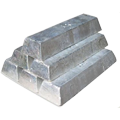
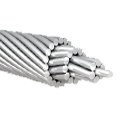
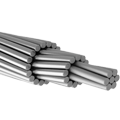
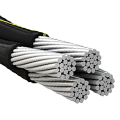
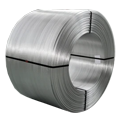
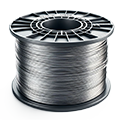
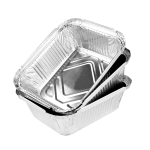








No comment